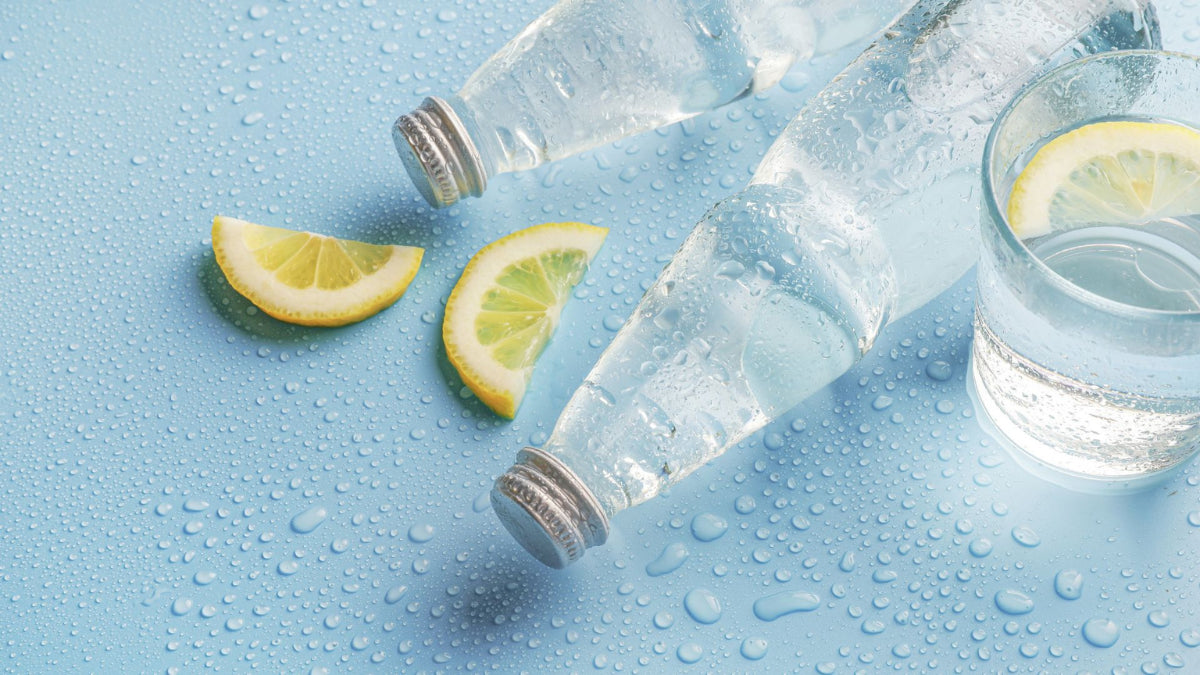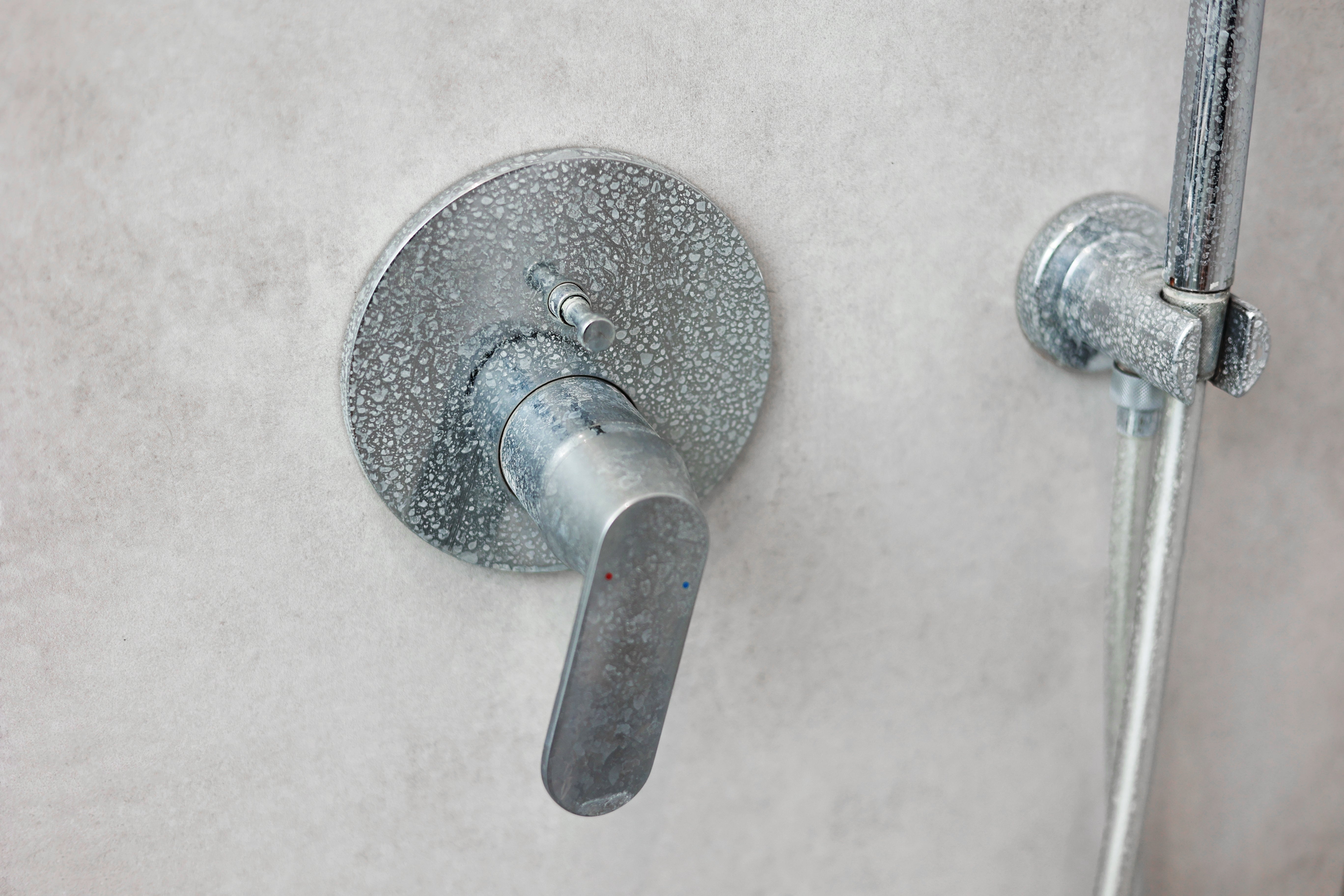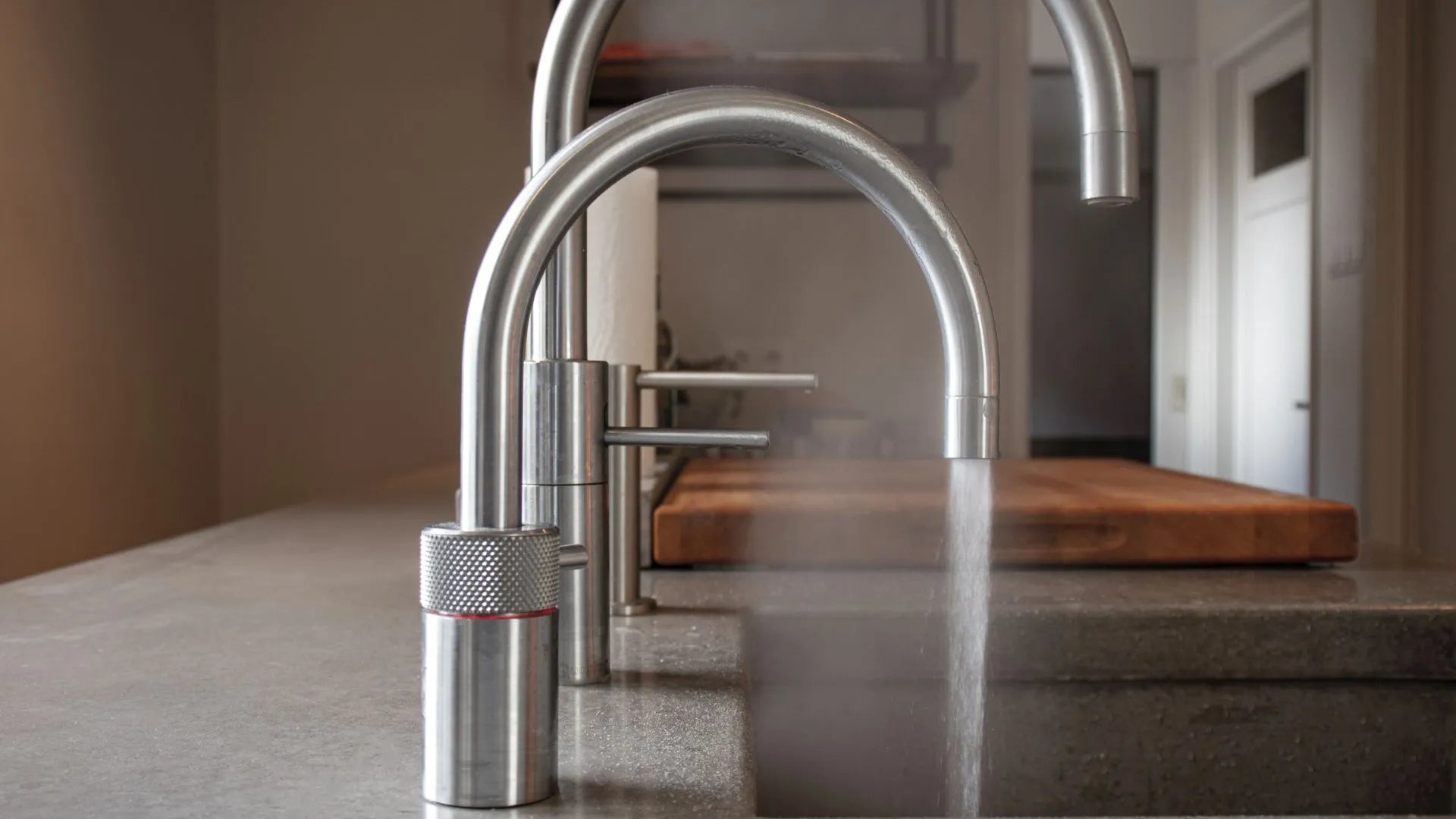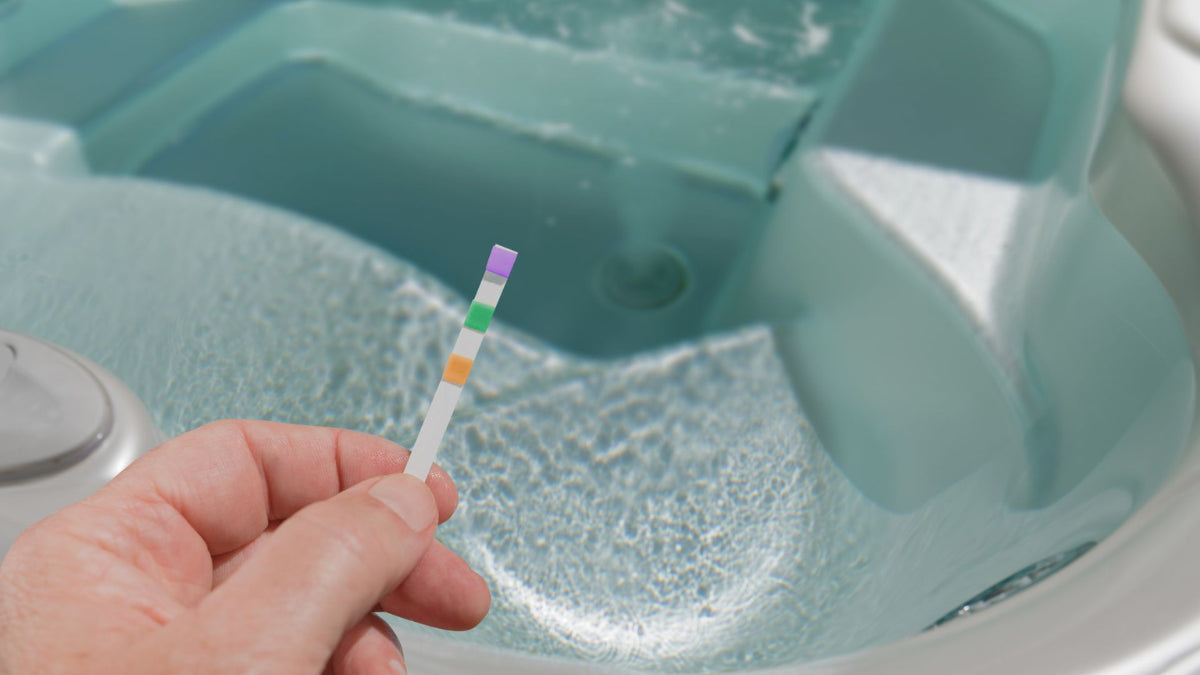Kalkschutz: Adé Kalkablagerungen, willkommen Mineralien

Bild: Kalk besteht aus Magnesium und Calcium und ist ein natürlicher Bestandteil von Wasser.
Kalkschutzmaßnahmen sind gesetzlich nicht verpflichtend, jedoch absolut sinnvoll. Selbst bei einer Wasserhärte von nur 7 °dH und einem durchschnittlichen Wasserverbrauch von 200 m³ pro Jahr (entspricht einem vier Personen Haushalt) werden etwa 25 kg Kalk durch die Wasserleitungen bewegt. Bei 22 °dH sind es bereits etwa 75 kg. Besonders wichtig: Achten Sie darauf, dass die gewählte Kalkschutzmaßnahme zu keiner Beeinträchtigung der Trinkwasserqualität führt. Im Folgendem möchten wir über effizienten Kalkschutz aufklären und geben einen Einblick in die Möglichkeiten dessen.
Was bedeutet Kalkschutz?
Unter dem Begriff Kalkschutz versteht man die Reduzierung von Kalkablagerungen (Steinbildung) auf wasserberührten Flächen, wie Heizwendeln, Ventilen oder Rohrwandungen. Das Besondere am Kalkschutz ist, dass die Trinkwasserzusammensetzung nicht verändert wird. Im Gegensatz zur Wasserenthärtung mithilfe einer Enthärtungsanlage bzw. Entkalkungsanlage werden dem Trinkwasser die Mineralien Calcium und Magnesium (Hauptbestandteile des Kalks) weder entzogen noch gegen Natrium ausgetauscht.
Eine Kalkschutzanlage bildet sogenannte Impfkristalle, die als Anlagerungspunkt für Kalk im Wasser dienen. Die so gebildeten mikroskopisch kleinen Kalkkristalle sind für das menschliche Auge unsichtbar. Anstatt sich an den wasserberührten Oberflächen anzulagern, schwimmen diese im Wasser frei mit und werden bei jeder Wasserentnahme ausgeschwemmt. Der Vorteil: Die gebildeten Kristalle bestehen aus den Härtebildnern Calcium und Magnesium. Diese Mineralien stehen im Leitungs- bzw. Trinkwasser dem menschlichen Körper weiterhin zur Verfügung. Dadurch ist das Thema Kalkschutz für all diejenigen interessant, die im Haushalt Kalkablagerungen reduzieren, die Trinkwasserqualität jedoch so belassen möchten, wie sie von ihrem örtlichen Wasserversorger eingespeist wird.
Kurz gesagt:
- Wasserenthärtung bzw. Wasserentkalkung bedeutet den Entzug von Calcium und Magnesium und den Austausch gegen Natrium.
- Kalkschutz bedeutet die Aufbereitung des Wassers mithilfe von Impfkristallen, an welchen sich Kalk ablagert.
Wann ist Kalkschutz sinnvoll?
Es gibt mehrere Merkmale, mit denen jeder herausfinden kann, ob das Thema Kalkschutz für den eigenen Haushalt von Vorteil ist. Grundsätzlich lohnt es sich, die Wasserhärte des örtlichen Leitungswassers in Erfahrung zu bringen. Ab einer Gesamtwasserhärte von 14 °dH oder mehr, also wenn das eigene Hauswasser viel Kalk enthält und somit im Bereich „hart“ liegt, werden Maßnahmen zum Kalkschutz empfohlen. Die örtliche Wasserhärte kann man ganz einfach auf der Internetseite seines Wasserversorgungsunternehmens oder seiner Stadt bzw. Gemeinde einsehen.
Ein weiterer Hinweis dafür, ob sich Kalkschutz für den eigenen Haushalt lohnt, ist die Häufigkeit, mit der Küchen- oder Haushaltsgeräte entkalkt werden müssen. Gerade Wasserkocher, Kaffeemaschinen oder Waschmaschinen leiden unter einer hohen Wasserhärte und können dadurch vorzeitig altern. Ähnlich verhält es sich mit Sieben bzw. Perlatoren an Wasserhähnen oder Oberflächen, wie Armaturen oder Fließen. Muss man solche Geräte oder Stellen häufig entkalken bzw. reinigen, kann dies ein Hinweis auf einen hohen Kalkgehalt des Leitungswassers sein. Für viele Verbraucher ist der dahinterstehende Komfort besonders hoch, wenn Oberflächen, Kaffeemaschinen und Co. weniger entkalkt werden müssen.
Langfristig wird davon auch die technische Gebäudeinstallationen wie Rohrleitungen, Warmwassererzeugungssysteme (z. B. Boiler) oder Ventile von Kalkablagerungen betroffen sein. Der Vorteil einer Kalkschutzanlage ist, dass solche Anlagen Kalkablagerungen in der Trinkwasserinstallation wirksam reduzieren, und dadurch gleichzeitig zum Werterhalt dieser wasserberührten Bauteile im eigenen Haus beitragen.

Bild: Kalkablagerungen in der Dusche.
Zusammengefasst: So erkennen Sie, dass Kalkschutz im Haushalt sinnvoll ist
Hochwertige Wasseraufbereitung wirkt sich ebenso positiv auf den persönlichen Komfort aus wie auf den Werterhalt der Immobilie. Eine Kalkschutzanlage erhöht die Lebensdauer von Installationen und Geräten. Ein weiterer Vorteil ist der positive Beitrag zur Hygiene in der Trinkwasserinstallation, da sich auf Kalkablagerungen Bakterien und Biofilm ablagern können. So erkennen Sie, dass auch in Ihrem Zuhause Kalkschutz von Bedeutung ist:
- Viel Kalk im Wasser: Wasserhärte liegt im Bereich „hart“ (14 °dH Gesamthärte oder höher)
- Häufiges Entkalken von Küchen- oder Haushaltsgeräten (z. B. Wasserkocher oder Kaffeemaschine)
- Häufiges Entkalken der Perlatoren bzw. der Siebe an den Wasserhähnen
- Schnelles Verkalken von Oberflächen (z. B. Armaturen oder Fließen)
- Zunehmend geringerer Wasserdruck
- Schwieriges Einstellen der gewünschten Wassertemperatur
Kalkschutz oder Wasserenthärtung: Was ist effektiver?
Wie zu Beginn bereits erwähnt, bleibt beim Kalkschutz der Kalkgehalt im Wasser nahezu unverändert. Eine Verringerung der Wasserhärte (Enthärtung) ist also kaum messbar. Bei der sogenannten Wasserenthärtung mittels Ionenaustausch auf Salzbasis hingegen wird ein Großteil des Wasserhärte gegen Natrium ausgetauscht. Dadurch verringert sich die Wasserhärte. Doch was ist effektiver? Kalkschutz oder Wasserenthärtung?
Bei der Wasserenthärtung bzw. Wasserentkalkung mittels Ionenaustausch auf Salzbasis verbleibt meist eine sogenannte Restwasserhärte im Leitungswasser. Dies kann beispielsweise notwendig sein, damit zum einen der Grenzwert der Trinkwasserverordnung für Natrium nicht überschritten wird. Zum anderen findet eine Enthärtung auf 0 °dH in der Regel nicht statt. So wird vermieden, dass sich das Wasser langfristig übermäßig korrosiv gegenüber manchen Materialien der Trinkwasserinstallation im eigenen Haus auswirkt. Ionenaustauscher auf Salzbasis liefern also kein vollkommen „kalkfreies“ Wasser.
Ähnlich wie beim Kalkschutz kann es auch beim Verwenden einer Entkalkungsanlage ohne Reinigen der Oberflächen weiterhin zu Kalkablagerungen kommen.
Ob daher Kalkschutz oder Wasserenthärtung effektiver zur Reduzierung von Kalkablagerungen ist, kann nur schwer beantwortet werden. Keine der Methoden führt dazu, dass das Reinigen von Kalkflecken auf Oberflächen im Badezimmer oder in der Küche vollkommen erspart bleibt. Was jedoch gesagt werden kann ist, dass sowohl Kalkschutz als auch Wasserenthärtung das Leben mit Kalk im Haushalt definitiv erleichtern!
Kalkschutz mit AQON PURE: Einzigartig und umweltfreundlich
Für seine Kalkschutz-Wirkung setzt AQON PURE auf die Fluid Dynamics Technologie. Die Fluid Dynamics Kalkschutztechnologie ist weltweit das einzige Verfahren, dessen Wirksamkeit in einer 18 Monate dauernden Studie untersucht wurde. Einmal am Hauswasseranschluss einer Immobilie installiert, bietet AQON PURE je nach Gerätevariante einen Kalkschutz für bis zu 10 oder 20 Jahre. Während dieser Zeit bedarf es keiner Wartung und keinem Austausch von Verbrauchsmaterialien. Die Trinkwasserqualität bleibt so, wie Sie von Ihrem Wasserversorgungsunternehmen kommt. Der AQON PURE Kalkschutz verursacht daher keinerlei Folgekosten und ist besonders umweltfreundlich.
Vorteile des AQON PURE Kalkschutzes
Zusammenfassend stellen wir die Vorteile nochmal in den Überblick:
- Untersuchte Wirksamkeit, Kalkablagerungen zu reduzieren (siehe Studie zur Wirksamkeitsuntersuchung)
- Kalkschutz ohne Veränderung der Trinkwasserqualität
- Umweltfreundlicher Kalkschutz durch Verzicht auf Verbrauchsmaterialien, wie Kartuschen, Granulat oder Chemie
- Kalkschutz ohne Abwasser und ohne Strom
- AQON PURE ist zu 100 % recyclingfähig
Der AQON PURE Kalkschutz zum Festpreis für Ihr Haus
AQON PURE gibt es in verschiedenen Produktgrößen und kann auf Wunsch mit geringem Aufwand durch unseren Installationsservice zum Festpreis oder durch ein Installationsunternehmen Ihrer Wahl in so gut wie jedem Haus eingebaut werden. Sie haben weitere Fragen zum Produkt? Die Vorteile und die Funktionsweise haben wir auf AQON PURE zusammengefasst. Gerne beraten wir Sie auch persönlich zu den Möglichkeiten des Kalkschutzes in Ihrem Haushalt.
Gut zu wissen
Die hier wiedergegebenen Inhalte beziehen sich auf Kalkschutz und Wasserenthärtung im Bereich von Wohnimmobilien bei der Verwendung von Trinkwasser gemäß der Trinkwasserverordnung. Es kann technische Prozesse geben, bei denen eine Wasserenthärtung notwendig ist, da die gelösten Härtebildner ansonsten prozessstörend wirken könnten. Dies kann beispielsweise der Fall sein, wenn Wasser zum Aufbereiten von Medizinprodukten benötigt wird.





